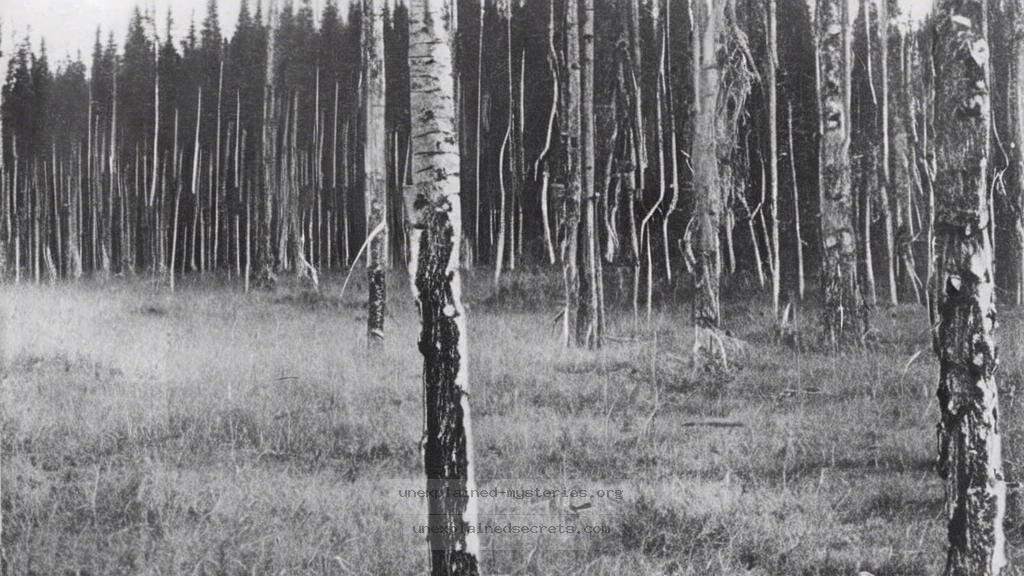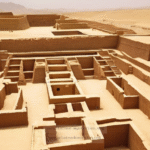What is the Tunguska Event and Why Does It Remain One of the Most Intriguing Scientific Anomalies?
What is the Tunguska Event and Why Does It Remain One of the Most Intriguing Scientific Anomalies?
The Tunguska Event, which occurred in 1908 in Siberia, is one of the most fascinating unsolved scientific mysteries of the modern era. It is characterized by a massive explosion that flattened approximately 2,000 square kilometers of forest, yet left no definitive impact crater to explain the phenomenon. This event raises significant questions about cosmic impacts, environmental science, and the nature of unexplained phenomena. Understanding the Tunguska Event matters because it challenges our comprehension of Earth’s interactions with space, and offers insights into potential future threats from similar occurrences. 🌍💥
The Historical Context of the Tunguska Event
The Tunguska Event took place on the morning of June 30, 1908, near the banks of the Tunguska River in central Siberia. Reports from the time describe a series of loud explosions, followed by a shockwave that knocked down trees and caused significant atmospheric disturbances. Eyewitness accounts from local Evenki tribes mentioned a “fire in the sky” and a tremendous heat wave, leading to speculation that the event was either natural or extraterrestrial in nature.
Despite the immediate impact on the environment, the remote location of the event meant that it went largely uninvestigated for several years. It wasn’t until the Soviet scientist Leonid Kulik led an expedition in 1927 that the true scale of the destruction became apparent. Kulik’s team found a vast area of flattened trees, but no crater or conventional signs of an impact, leading to various theories about the cause of the explosion. 🔍🌲
Core Concepts: What Happened at Tunguska?
Initially, the leading hypothesis was that a comet or asteroid exploded in the atmosphere above the Earth, creating a massive airburst. The explosion is estimated to have released energy equivalent to between 10-15 megatons of TNT, which is approximately 1,000 times more powerful than the atomic bomb dropped on Hiroshima. The energy release created a shockwave that flattened trees over a vast area, while the absence of a crater suggested that the object disintegrated before reaching the ground.
Competing theories have emerged over the years, including ideas that suggest natural phenomena such as volcanic activity or even a small nuclear explosion could have caused the event. However, the airburst hypothesis remains the most widely accepted explanation among scientists due to the lack of physical evidence for an impact crater. 🌌💣
Practical Implications of the Tunguska Event
The Tunguska Event serves as a crucial case study for understanding the potential risks posed by near-Earth objects (NEOs). The lack of a crater leads to questions about how many other similar events may have occurred in Earth’s history without leaving recognizable evidence. The implications extend to planetary defense strategies, as the possibility of a catastrophic impact from a larger object remains a concern for scientists and policymakers alike.
The event also highlights the need for improved detection systems for tracking asteroids and comets that may pose a threat to Earth. Organizations like NASA and ESA have initiated programs to monitor NEOs, but the Tunguska incident demonstrates that not all cosmic events may be detected in advance. ⚠️🌌
Alternative Perspectives: Theories Beyond the Mainstream
While the airburst theory is predominant, alternative hypotheses continue to captivate the imagination of researchers and enthusiasts. Some of these include:
- Nuclear Explosion Theory: Some theorists speculated that a secret nuclear test could have caused the explosion, but this is widely dismissed due to historical context.
- Black Hole Theory: A more abstract idea is that a small black hole might have passed through Earth, causing atmospheric disturbances without leaving a trace.
- UFO Theories: Conspiracy theories about extraterrestrial involvement abound, with some claiming that a spacecraft was responsible for the explosion.
These alternative perspectives, while intriguing, often lack scientific grounding and are not supported by the evidence available. Nonetheless, they demonstrate the enduring mystery surrounding Tunguska and the human desire to seek explanations beyond the observable. 🛸✨
Common Misconceptions about the Tunguska Event
Several misconceptions about the Tunguska Event persist, leading to confusion and misinformation:
- All Explosions Leave Craters: Many assume that a significant explosion must leave a visible impact crater, which is not the case with airbursts.
- It Was a Meteorite Impact: While it is widely believed that a cosmic object caused the event, the absence of a crater suggests otherwise.
- Scientific Consensus Exists: There is no universal agreement among scientists about the event’s cause, highlighting the complexity of the phenomenon.
Notable Fact: The Tunguska Event is often cited in discussions about planetary defense and the potential for catastrophic cosmic impacts on Earth.
Best Practices for Investigating Such Anomalies
Investigating cosmic events like the Tunguska Event requires a multidisciplinary approach that involves various scientific fields, including astronomy, geology, and atmospheric science. Here are some best practices for conducting such investigations:
- Gather Historical Data: Collect eyewitness accounts and historical records to build a comprehensive picture of the event.
- Utilize Modern Technology: Employ satellite imagery, remote sensing, and other technologies to analyze affected areas.
- Collaborate Across Disciplines: Engage experts from different scientific fields to analyze data from multiple perspectives.
- Public Education: Foster public awareness of the risks associated with NEOs and the importance of ongoing research.
Such practices not only enhance our understanding of past events but also improve our preparedness for future cosmic threats. ✅🔭
Future Developments and Ongoing Research
Research into the Tunguska Event continues to evolve, with scientists revisiting the site and utilizing new technologies. Ongoing studies involve:
- Geological Surveys: Scientists are conducting detailed geological surveys to uncover more about the environmental changes in the area post-event.
- Modeling and Simulations: Advanced modeling techniques are used to simulate the explosion and its effects on the surrounding environment.
- International Collaboration: Global scientific collaboration is essential for tracking potential NEOs and mitigating risks associated with future impacts.
These research efforts aim to deepen our understanding of the Tunguska Event and inform strategies for planetary defense. 🌐🛡️
Conclusion: The Legacy of Tunguska
The Tunguska Event remains a captivating scientific mystery, highlighting the intersection of Earth science and cosmic phenomena. While the airburst theory is the most widely accepted explanation, ongoing research continues to uncover new insights into this enigmatic event. The implications of Tunguska extend beyond historical intrigue; they serve as a reminder of the potential risks posed by our cosmic neighborhood.
As we continue to explore the universe and our place within it, the legacy of Tunguska reminds us of the fragility of our planet and the importance of scientific inquiry. Understanding these events not only enriches our knowledge but also prepares us for the challenges that lie ahead in our ever-changing world. 🌌💫
Other Articles
Recent Posts
- What Happened to Flight MH370? The Conspiracy Theories That Still Haunt Us
- What Secrets Lurk Within the Walls of the Infamous Trans-Allegheny Lunatic Asylum?
- What Evidence Supports the Existence of Bigfoot in the Pacific Northwest?
- What Happened to the Indus Valley Civilization? Unraveling the Mysteries of Ancient Urban Life
- Can Telepathy Be Scientifically Proven Through Laboratory Evidence?







